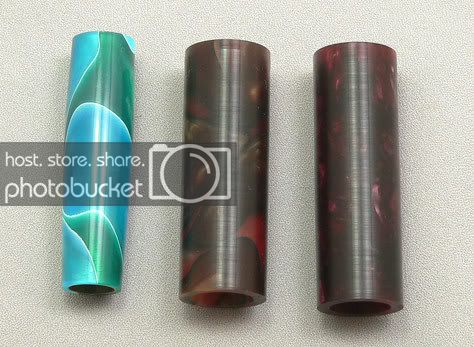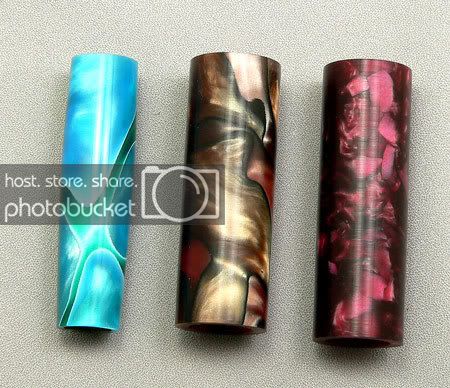Dan_F
Member
Well, I'm now able to make passable threads with the tap and die. The next hurdle is how to make sure the cap and barrel will line up after screwing on the cap. I don't mean the 1 in 3 chance of starting on the correct thread, I mean stopping the rotation in precisely the right spot so that if there is grain or pattern to the blank, it will line up.
In vintage pens, this is done by adjusting the height of the inner cap, so that when it makes contact with the front of the section, the cap is aligned in it's proper orientation. It stops the pen from going in any further. The inner cap also seals the chamber housing the nib, to aid in preventing it from drying out.
So the question is, what methods have been adopted by you intrepid explorers to solve this problem? I find that the end of the threads themselves do not provide a very precise stop. I tried leaving a ridge at the end of the tenon to function as a stop, but I can't predict well enough where the threads are starting to make that a dependable stop. The die also seems to be tapered, so it doesn't cut right to the shoulder. I tried turning it around after initially cutting the threads, then running it over again to clean up the shoulder area, as someone suggested in another thread, but it just ended up stripping out the threads I had just cut.
I know that with many blanks this wouldn't even be an issue, as there is no discernible pattern or figure to align with. But it would seem a good idea to have consistency, so that things are done the same way whether there is figure or not.
I will continue experimenting at any rate, but a little guidance would sure be appreciated.
Thanks,
Dan
In vintage pens, this is done by adjusting the height of the inner cap, so that when it makes contact with the front of the section, the cap is aligned in it's proper orientation. It stops the pen from going in any further. The inner cap also seals the chamber housing the nib, to aid in preventing it from drying out.
So the question is, what methods have been adopted by you intrepid explorers to solve this problem? I find that the end of the threads themselves do not provide a very precise stop. I tried leaving a ridge at the end of the tenon to function as a stop, but I can't predict well enough where the threads are starting to make that a dependable stop. The die also seems to be tapered, so it doesn't cut right to the shoulder. I tried turning it around after initially cutting the threads, then running it over again to clean up the shoulder area, as someone suggested in another thread, but it just ended up stripping out the threads I had just cut.
I know that with many blanks this wouldn't even be an issue, as there is no discernible pattern or figure to align with. But it would seem a good idea to have consistency, so that things are done the same way whether there is figure or not.
I will continue experimenting at any rate, but a little guidance would sure be appreciated.
Thanks,
Dan




